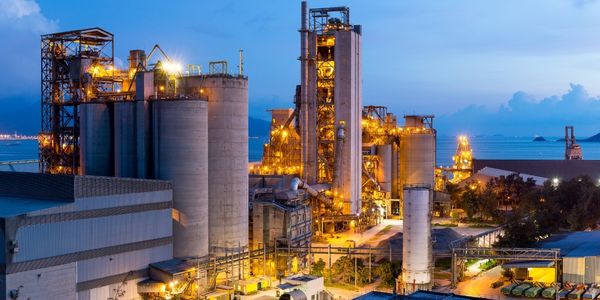Technology Category
- Application Infrastructure & Middleware - Data Visualization
- Robots - Parallel Robots
Applicable Industries
- Buildings
- Cement
Applicable Functions
- Quality Assurance
Use Cases
- Building Automation & Control
- Construction Management
Services
- Testing & Certification
About The Customer
Honeywell is a global provider of industry-specific solutions, delivering products and services in the aerospace sector, control technologies for buildings and industry, and performance materials. Honeywell's Energy and Environmental Solutions division uses IoT sensors and other technologies to help businesses worldwide manage energy demand, reduce energy consumption and carbon emissions, optimize indoor air quality, and improve occupant well-being. Honeywell's solutions and services are used in millions of buildings around the world, requiring the company to collect and manage vast amounts of data from a multitude of sources.
The Challenge
Honeywell, a global provider of industry-specific solutions, is under increasing pressure to reduce energy use, lower costs, and improve efficiency. Their Energy and Environmental Solutions division uses IoT sensors and other technologies to help businesses manage energy demand, reduce energy consumption and carbon emissions, optimize indoor air quality, and improve occupant well-being. This requires Honeywell to collect vast amounts of data from millions of buildings worldwide. These buildings are equipped with thousands of sensors monitoring factors such as temperature, pressure, humidity, and air quality. In addition to this, data is also collected from external sources like weather and pollution data, and information about the buildings themselves. At peak times, Honeywell ingests between 200 to 1,000 events per second for any building, equating to billions of data points per day. Honeywell's existing data infrastructure was struggling to meet this demand, making it difficult for the data team to query and visualize the disparate data to provide customers with fast, high-quality information and analysis.
The Solution
Honeywell adopted Delta Live Tables (DLT) on the Databricks Lakehouse Platform to manage their vast and varied data. This platform allowed Honeywell's data team to ingest billions of rows of sensor data into Delta Lake and automatically build SQL endpoints for real-time queries and multilayer insights into data at scale. The Databricks Lakehouse Platform helped unify Honeywell's batch, streaming, structured, and unstructured data into one platform. Honeywell's data engineers were able to build and leverage their own ETL pipelines with Delta Live Tables, gaining insights and analytics quickly. These ETL pipelines could be reused regardless of the environment, and data could run in batches or streams. DLT also helped Honeywell establish standard log files to monitor and cost-justify its product pipelines. The use of the lakehouse as a shared workspace promoted teamwork and collaboration, while the ability to manage streaming data with low latency and better throughput improved accuracy and reduced costs.
Operational Impact
Quantitative Benefit

Case Study missing?
Start adding your own!
Register with your work email and create a new case study profile for your business.
Related Case Studies.

Case Study
Energy Saving & Power Monitoring System
Recently a university in Taiwan was experiencing dramatic power usage increases due to its growing number of campus buildings and students. Aiming to analyze their power consumption and increase their power efficiency across 52 buildings, the university wanted to build a power management system utilizing web-based hardware and software. With these goals in mind, they contacted Advantech to help them develop their system and provide them with the means to save energy in the years to come.

Case Study
System 800xA at Indian Cement Plants
Chettinad Cement recognized that further efficiencies could be achieved in its cement manufacturing process. It looked to investing in comprehensive operational and control technologies to manage and derive productivity and energy efficiency gains from the assets on Line 2, their second plant in India.

Case Study
Intelligent Building Automation System and Energy Saving Solution
One of the most difficult problems facing the world is conserving energy in buildings. However, it is not easy to have a cost-effective solution to reduce energy usage in a building. One solution for saving energy is to implement an intelligent building automation system (BAS) which can be controlled according to its schedule. In Indonesia a large university with a five floor building and 22 classrooms wanted to save the amount of energy being used.

Case Study
Powering Smart Home Automation solutions with IoT for Energy conservation
Many industry leaders that offer Smart Energy Management products & solutions face challenges including:How to build a scalable platform that can automatically scale-up to on-board ‘n’ number of Smart home devicesData security, solution availability, and reliability are the other critical factors to deal withHow to create a robust common IoT platform that handles any kind of smart devicesHow to enable data management capabilities that would help in intelligent decision-making

Case Study
Commercial Building Automation Boosts Energy Efficiency
One of the challenges to building automation is the multitude of non-interoperable communications protocols that have evolved over the years. Buildings have several islands of automation. Bridging the islands of different automation without losing the considerable investment in each specialized control network is the main focus in this solution.




